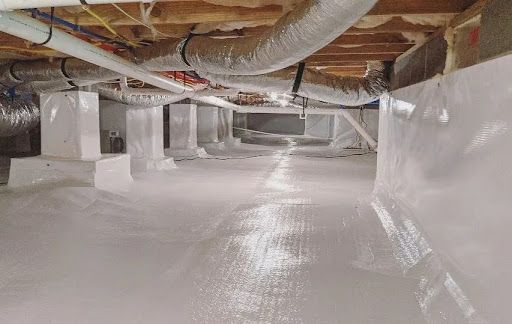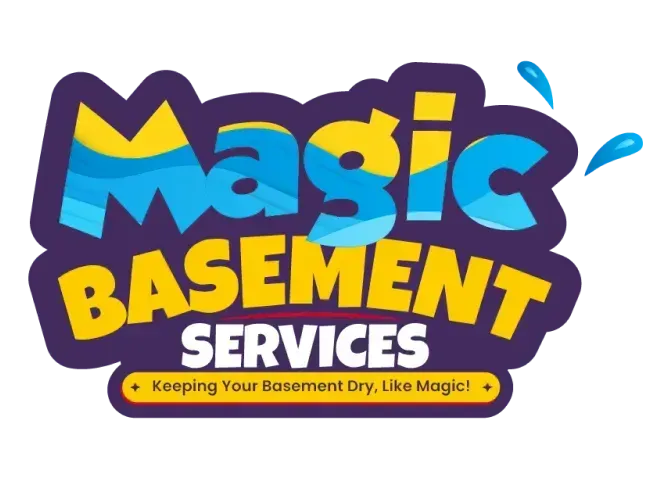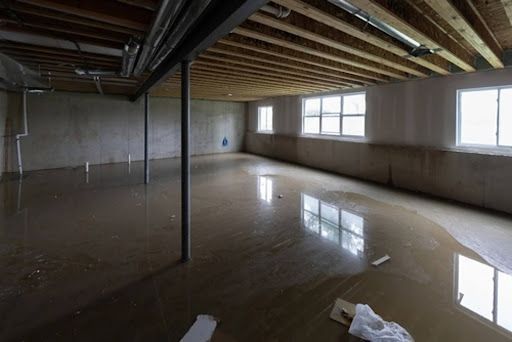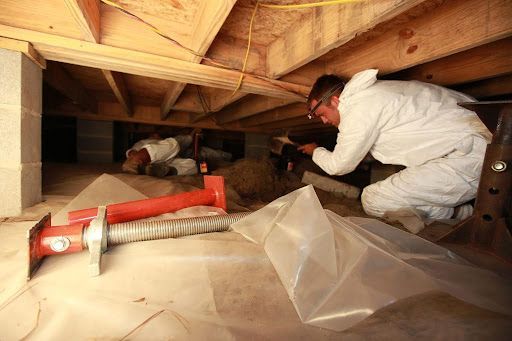Crawl Space Encapsulation Explained: Comprehensive Guide to Methods, Materials, and Benefits
Crawl spaces are often the most neglected parts of a home, but they play a critical role in your home’s health and energy efficiency. Crawl space encapsulation is sealing and insulating your crawl space to protect it from moisture, mold, pests, and structural damage. It involves covering the floor and walls with heavy-duty vapor barriers and installing systems like sump pumps or dehumidifiers to maintain a dry, clean environment.
If Left unprotected, crawl spaces can become breeding grounds for mold and mildew, leading to musty indoor air, warped flooring, and foundation issues. That’s why many homeowners across Long Island turn to Magic Basement Services, a trusted name in moisture control and structural repair, for long-term, professional solutions.
Encapsulation doesn’t just solve problems; it prevents them. This guide will explain how crawl space encapsulation works, the materials and methods used, and why professional service matters more than ever.
What Is Crawl Space Encapsulation?
Crawl space encapsulation seals your home’s crawl space from outside moisture, air, and pests. It involves covering the floor and walls with a thick vapor barrier, usually made of plastic sheeting, and sometimes adding insulation, a dehumidifier, and drainage systems to keep the space dry and stable year-round.
Unlike basic sealing or waterproofing, which may only address surface-level issues or focus on one part of the crawl space, crawl space encapsulation is a complete solution. It creates a controlled environment beneath your home, which protects it from long-term damage caused by dampness, rot, mold, and pests.
By keeping moisture out, this method improves indoor air quality, helps prevent insect infestations, and reduces energy bills since your HVAC system doesn’t have to work as hard to manage the temperature in a damp home.

Methods Used by Crawl Space Encapsulation Professionals
When you hire experts for crawl space encapsulation services, the process is far more thorough than a DIY fix. Here’s a quick look at the professional approach, step by step:
Inspection
The first step is a complete assessment of the crawl space. Professionals look for moisture, mold, standing water, structural damage, and pest activity, which helps them create an encapsulation plan for your home.
Cleaning
Before any material is installed, the crawl space must be cleaned. That includes removing debris, old insulation, and any signs of pests or mold.
Sealing Vents and Gaps
All vents, cracks, and access points are sealed with foam or caulking to prevent outside air and water from entering. This step is critical in ensuring a fully enclosed system.
Laying the Vapor Barrier
A thick plastic vapor barrier is rolled out across the floor and walls. It’s sealed tightly at every seam to lock out moisture from the ground and the surrounding foundation.
Installing a Sump Pump or a Drainage System
If the crawl space has a history of flooding or standing water, a sump pump repair or interior drainage system may be added to redirect water away from the home.
Dehumidifier Setup
Finally, a commercial-grade dehumidifier installation is often installed to maintain dry air conditions. This helps prevent mold regrowth and keeps humidity levels under control long term.
By choosing professional crawl space encapsulation services, homeowners ensure that every critical step is handled correctly and that the results will last for years.
Top Benefits of Crawl Space Encapsulation
Choosing crawl space encapsulation isn’t just about preventing damage; it’s an investment in your home’s long-term comfort, safety, and efficiency. Here are some of the key benefits homeowners can expect:
Improves air quality
Up to 50% of your home's air can come from the crawl space. Encapsulation reduces mold spores, dust, and allergens from circulating indoors.
Reduces moisture and mold
Encapsulation helps prevent mold growth and mildew buildup, which can harm your home and health, by sealing out damp air and ground moisture.
Protects structural integrity
Moisture can weaken wooden beams, floor joists, and insulation. Keeping your crawl space dry helps preserve your home’s structure and avoids the need for foundation repair experts.
Lowers energy bills
A sealed crawl space means less cold air in winter, and less humidity in summer, so your HVAC system doesn’t have to work as hard.
Increases home value
Homes with encapsulated crawl spaces are often more appealing to buyers and pass inspections more easily, making it a smart upgrade for resale.

Signs You May Need Crawl Space Encapsulation
Does your home need encapsulation? Here are some common red flags that indicate it’s time to take a closer look at your crawl space:
- Musty odor:
A strong, damp smell inside your home, especially near the floors, is often a sign of excess moisture or mold growth below.
- Sagging floors:
If your floors feel uneven or springy, moisture may damage the wooden beams and joists that support them. This could indicate that you need professional
sagging floor repair as part of your crawl space encapsulation plan.
- High indoor humidity:
When moisture seeps up from the crawl space, it can make your home feel sticky and uncomfortable, even with the AC running.
- Visible mold or pests: If you see mildew on walls or frequent bugs and rodents, your crawl space may be the source of the problem.
Why Hire Crawl Space Encapsulation Professionals?
While DIY home improvements can be rewarding, crawl space encapsulation is one project where cutting corners can cost you more in the long run. Proper encapsulation requires specialized tools, materials, and know-how for lasting results.
A common mistake in DIY attempts is using thin plastic sheets or skipping critical steps like sealing vents or installing a dehumidifier. These oversights can lead to ongoing moisture problems, pest infestations, and even structural damage, defeating the project's purpose altogether.
Hiring experts for professional crawl space encapsulation ensures the job is done safely and thoroughly. Trained technicians understand how to handle drainage, electrical systems, insulation, and airflow. They’ll identify and install drainage systems and use materials that are made to last and perform better.
With a crawl space encapsulation expert, you can have peace of mind knowing your home is protected by a long-term, code-compliant solution backed by service warranties and expert guidance.
Why Homeowners Choose Magic Basement Services
Homeowners across Long Island trust Magic Basement Services because they deliver reliable, long-lasting results. As a fully licensed and insured company, they bring years of hands-on experience to every project. Their team has helped hundreds of families protect their homes with expert crawl space repairs and moisture control solutions.
They don’t believe in one-size-fits-all fixes. Instead, they assess each property and deliver crawl space solutions that work. When you choose Magic Basement Services, you get professional crawl space encapsulation services backed by skill, service, and a strong local reputation.
Final Thoughts
Crawl space issues rarely fix themselves. The longer you wait, the more damage moisture, mold, and pests can cause beneath your home. Acting early with crawl space encapsulation helps you avoid costly repairs and protects your home’s structure, air quality, and energy efficiency for the long term.
If you’ve noticed any warning signs or just want peace of mind, don’t wait.
Schedule a call today to book a professional inspection or get a free quote from the experts at Magic Basement Services.
FAQs
How long does crawl space encapsulation take?
Most crawl space encapsulation services take 1–3 days, depending on the crawl space size and condition.
Will it eliminate mold permanently?
Professional crawl space encapsulation removes moisture that causes mold, but existing mold must be treated first.
Is encapsulation worth the cost?
Yes, especially in Long Island, where moisture is common. It protects your home and reduces energy bills.
Do I need a dehumidifier afterward?
Often, yes. It helps control humidity and is usually included in professional crawl space encapsulation.
Can I stay at home during the process?
Yes. The work below the house won’t disrupt your daily routine.







